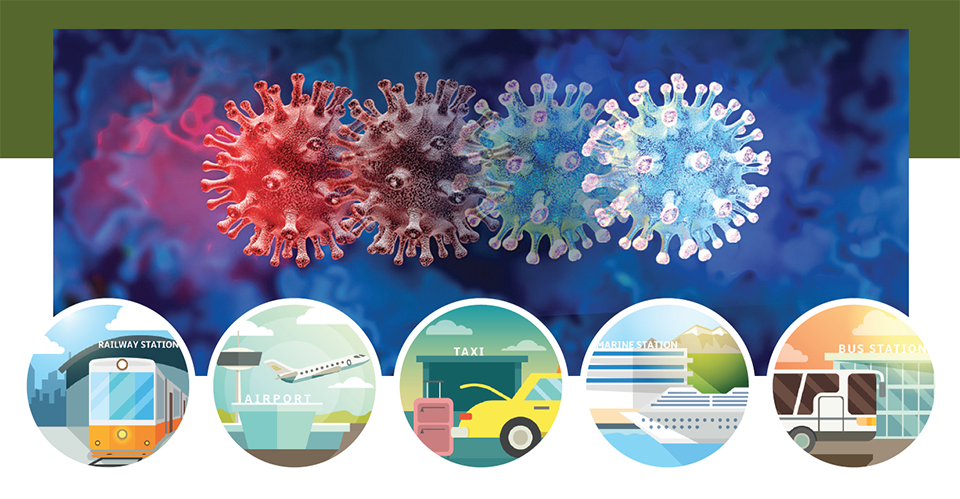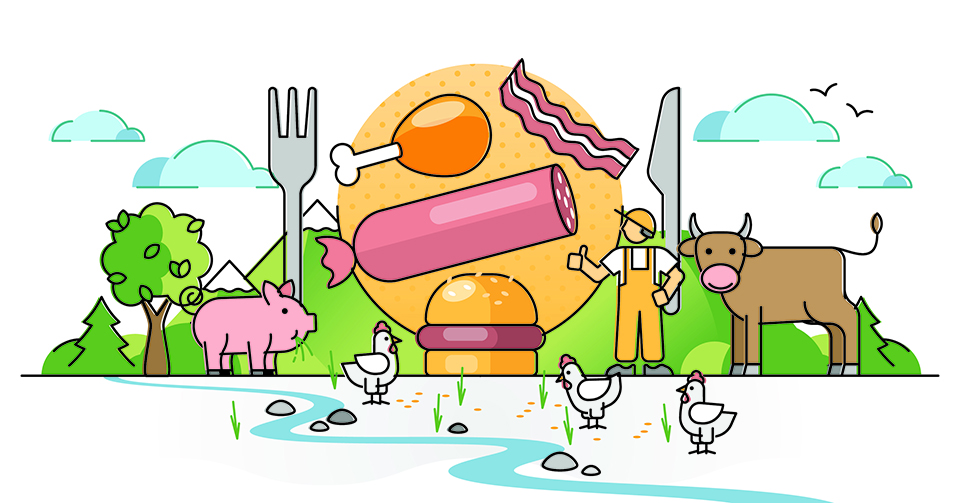THE LINK BETWEEN ANIMAL FARMING AND THE COVID-19 PANDEMIC
We’ve all heard about how Wuhan in China became the epicenter for the COVID-19 pandemic, as it was there that SARS-COV-2 spread out into the world. However, did you know that the COVID-19 pandemic – and other similar diseases – may have had its origins in farmed animals?
ANIMAL FARMS
While the virus responsible for COVID-19 may have come from a bat or a pangolin, the problem is that humanity has been increasing the risk of catching new diseases by exploiting wildlife as a food source or for commercial gain, according to a 2021 press release from the Center for Biological Diversity.
Wildlife exploitation is easier to explain when it comes to diseases suddenly affecting humans. When a wild animal has a virus, all it takes is for various species to intermingle in a small area, and the passing of the virus from one animal to the next can trigger mutations that will make them ultimately able to infect humans as well.
However, most people don’t think about the more dangerous possibility: that our own methods of using animals for food using large-scale production methods may be a tipping point for other pandemic-capable diseases in the future.

BREEDING AND EVOLUTION
Professor Cock Van Oosterhout, in a 2021 editorial in the journal Virulence, has theorized and warned readers that the process of breeding livestock is being outpaced by the evolution of parasites – including viruses – thanks to a lack of genetic diversity. This makes livestock potential breeding tanks for future infectious diseases that will be able to jump the barrier between animals and humans.
Fortunately, all is not lost. There are still ways where humanity can prevent the rise of other infectious diseases through the industrial weak point of livestock.
CONTROLLING TRAVEL
In the case of COVID-19, we’ve seen how global travel has helped spread the virus. This is one way we can stop mutations from happening in potentially pandemic diseases: Stop travel to limit mutations that will happen as viruses cross over into various populations. This applies not only to humans, but to animals as well.
Sad as it may seem, it may be that compulsive vaccinations and vaccine passports will be here to stay to prevent humans from infecting various livestock with viruses and giving rise to new mutations.
WHAT IS ZOONOSIS?
At the very heart of the origin of SARS-COV-2 is the fact of what it is: a zoonotic disease. But what does that mean, really?
At this point, most if not all of us are familiar with how the COVID-19 pandemic started – that it was a disease that was passed on to humans from animals – and that’s exactly what zoonosis is. Zoonotic diseases can be parasitic, bacterial, or viral in nature, and can be spread to humans through direct contact, or through the environment, food, or water, as detailed by a 2020 online article by the World Health Organization.
These kinds of diseases are practically unavoidable, given how closely humans interact with animals in an agricultural setting, to say nothing of our animal companions and family members, or the occasional interaction with animals in the wild.
Zoonotic diseases – and the measures to prevent their spread – can interfere with life the way we know it.

IDENTIFY WHICH CAMEFROM WHAT
It’s important to keep track of animal populations and the diseases that are inherent in them. That way, if mutations happen, measures can be taken before a disease can make a significant crossover to another species – or humans.
LESSEN PROTEIN PRODUCTION
The ugly truth is, human civilization is built-in mass food production, which is now unsustainable on many levels. Because of the closeness of current livestock animals in terms of relative genetic similarities (as compared to, say, fish), it’s easier for diseases to cross over.
If humanity wants to cut down on the breeding grounds for viruses, then one big solution would be to cut down on (or completely eliminate -Ed.) livestock output, and switch to other agricultural products which are not animal-based.Advocate
HOW DO YOU STOP ZOONOTIC DISEASES?
There are some simple ways to prevent the infection of zoonotic diseases, according to the Centers for Disease Control and Prevention.
WASH YOUR HANDS
Always wash your hands after being in an animal’s environment, even if you did not touch them. This can apply to our interactions with our furry family members, too. Make sure to use soap and a proper supply of clean running water. You can also use alcohol or alcohol-based hand sanitizers.
CHECK FOR PARASITES
Be on the look out for fleas, mosquitoes, and ticks, all of which can spread blood-borne diseases – which, unfortunately, many zoonotic diseases are, including COVID-19.
PROTECT AGAINST INJURIES
Avoid bites and scratches from animals, and even from your furry companions.
Remember, the saying “an ounce of prevention is better than a pound of cure” isn’t trite if what you could possibly be infected with can be physically debilitating for weeks or months – and in the case of some zoonotic diseases, have high mortality rates.
THE IMPACT OF MASS PRODUCTION
Mass production in the form of factory farming has many “bad habits” in itself, which likely contribute to the creation of more diseases. In a report from ProVeg, an international food awareness organization, they claim that 75% of all emerging infectious diseases have come from animals, both from wild animals (which, they assume, happened with COVID-19), and from farmed animals, as is the case in avian and swine flu.
ProVeg also wrote in their report that the preference for meat, eggs and other dairy products as major food sources is the source of close-contact issues between humans and animals, as mass-production farming puts more animals into the same amount of space available. By the same token, more animal habitats are also being invaded due to the need to expand mass-production operations, according to a 2020 article by Flora Southey for Food Navigator.

SO, WHAT IS THE SOLUTION?
Aside from control over global travel by humans, cleaning up wildlife trafficking will be important, so that animals who are possible carriers will not have the chance to become carriers and mutation tanks for diseases that can potentially infect humans.
The real challenge, though, will be the issue of how we can lower the demand for meat in our diet. After all, if we want the livestock industry to maintain its size and not expand anymore – or, even better, to shrink to manageable levels (or shrink to zero -Ed.) – then we must understand that a radical cultural shift in food and lifestyle culture is long past due.
If we want to prevent future pandemics, then we must be aware of how our food sources and mass-production facilities will need major modifications, if only to slow viruses down when it comes to evolving to attack human beings.






